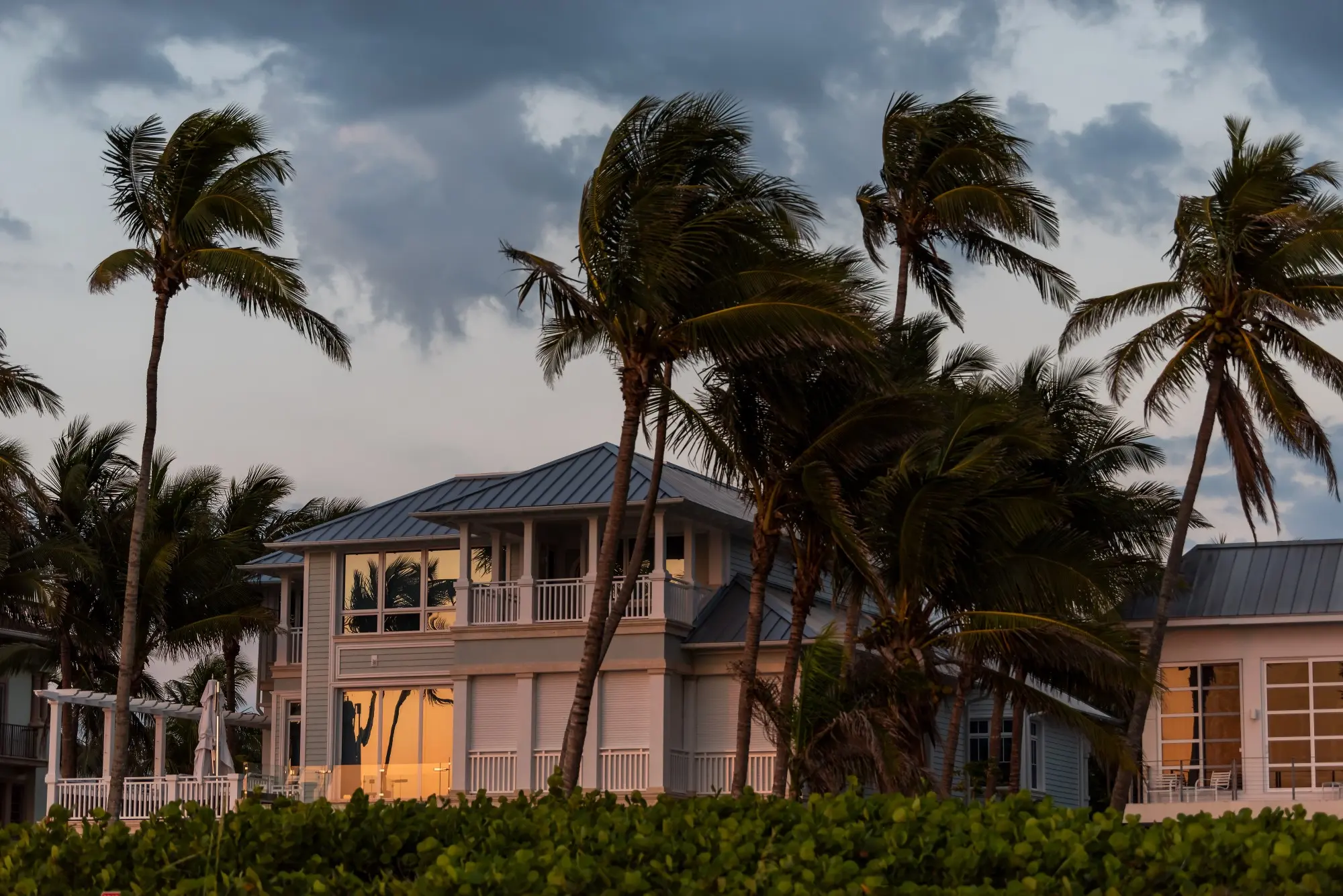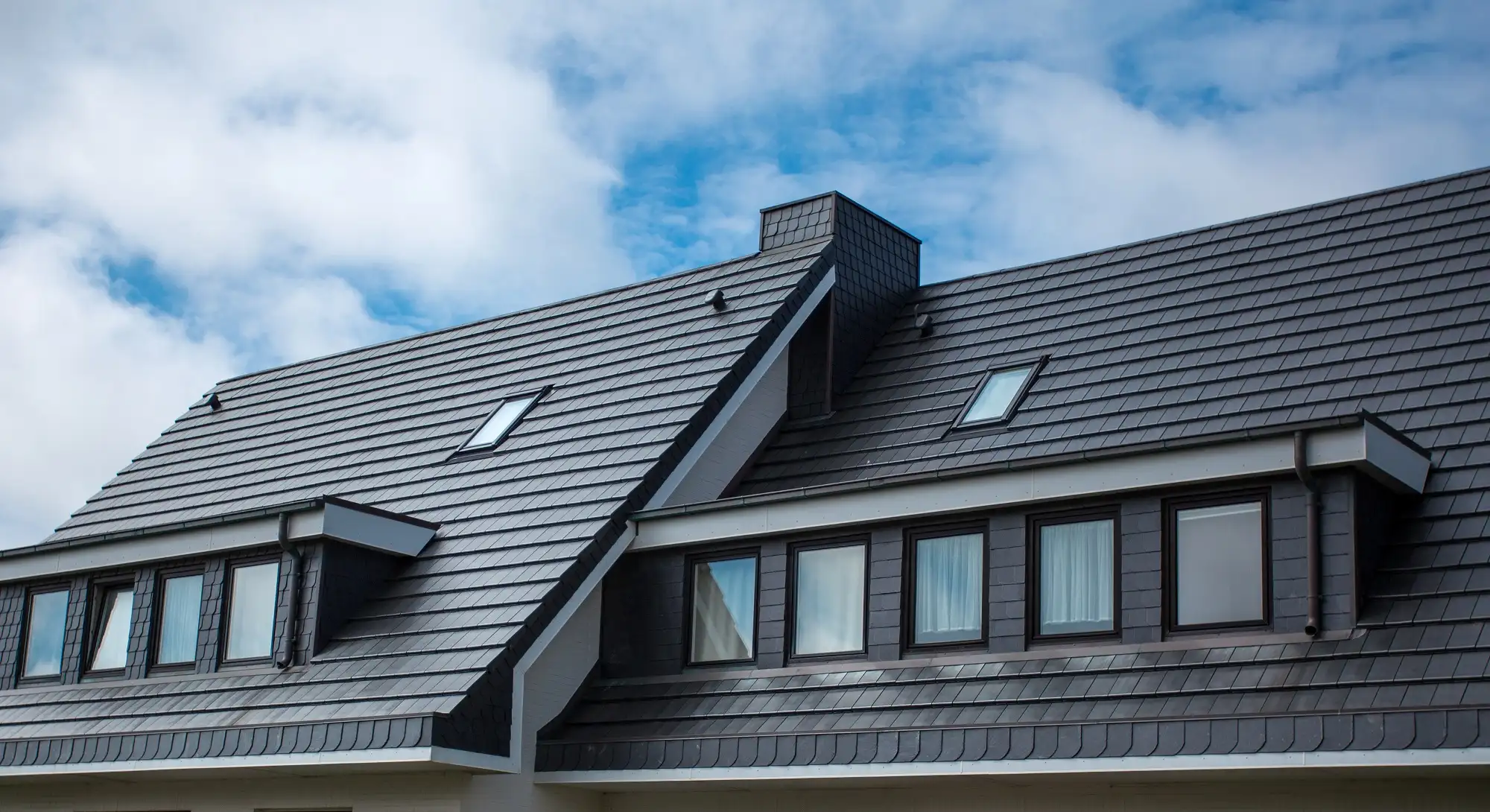As professional roofing contractors who understand Midwest storm patterns, Greater Midwest Exteriors helps homeowners implement defense systems that stand up to our unique weather challenges. This guide reveals exactly which upgrades provide reliable protection against the severe weather that actually threatens Chicago homes.
The Hidden Connection That Saves Homes from Destruction

Your house and its structural integrity depend on connections between components. A continuous load path transfers wind forces from the roof through the walls into the foundation to prevent failure during tornadoes and severe storms.
Hurricane straps tie roof rafters to wall plates, creating mechanical bonds that resist uplift. Installing these straps typically costs $1,000-$3,000 for an average home (prices vary by region and home size), a small price compared to potential roof replacement costs of $15,000-$50,000. These hurricane clips make a big difference in protecting your property.
Older homes can be retrofitted with structural screws, offering efficient alternatives to traditional clips in tight spaces. Illinois retrofit projects require building permits, so check local requirements first. Before investing in storm protection upgrades, understand current market pricing. Check our detailed breakdown of average roof replacement costs in the Chicago area to budget effectively.
How to Reinforce Your Roof Against Midwest Storms
Chicago's severe weather demands materials that handle both high winds and hail impact. The roofing material you choose directly impacts survival rates during the severe storms that strike Illinois an average of 7.8 times per year.
Class 4 shingles withstand 2-inch hail without cracking, a benefit that is crucial for Illinois. Steel metal roofing with concealed fasteners provides superior dual protection against both wind damage and debris impact.
Understanding these material lifespans can help you make the smartest investment. Explore which roofing materials last the longest to maximize your protection against Illinois weather extremes.
Seal and Secure the Roof Deck
During this process, you’ll apply self-adhering polymer-modified bitumen tape to deck seams before underlayment begins. This $0.50 per square foot barrier may not seem like much, but it prevents water damage during severe thunderstorms. Ring-shank nails increase holding power 40 percent over smooth alternatives. Enhanced nailing patterns with 5/8-inch minimum roof sheathing resist F2-F3 tornado uplift pressures. We recommend using six nails per shingle instead of four, as it makes a big difference in wind resistance.
Don’t Forget to Protect Your Home's Weak Points
Did you know that windows and doors are your home's most vulnerable points during severe storms? Once breached by hail or debris, internal pressure changes can blow off roofs and collapse walls within seconds. Just as homes in Florida install hurricane shutters and storm shutters, Chicago homes need similar hurricane protection systems.
Install Impact-Resistant Windows
Impact windows are made of laminated glass that holds together when shattered. DP-50 ratings withstand pressure equivalent to 200 mph winds. At $800-$2,000 per window installed, they eliminate emergency boarding needs while providing 25 percent noise reduction and improved insulation for Chicago's temperature extremes. They're an affordable option compared to replacing your entire property after storm damage.
Upgrade Entry and Garage Doors
Fiberglass exterior doors resist the Midwest’s humidity cycles while maintaining structural integrity. For your front door, you’ll need reinforced strike plates with 3-inch screws into the framing to prevent debris penetration.
Standard 16-foot garage doors face 2,000 pounds of pressure in 100 mph winds. Reinforcement kits cost $500-$700; new hurricane-resistant garage doors range $1,500-$3,000 installed. These upgrades protect your garage and everything you keep inside.
Combat Chicago's Chronic Flooding Problem

Flooding requires a different approach. It causes more Chicago property damage than any other weather hazard. The city's flat terrain, clay soil, and aging combined sewers create risks far from Lake Michigan.
Install Backflow Prevention Devices
Chicago's combined sewers back up through home drains when they become overwhelmed. South and West Side neighborhoods in particular face repeated basement flooding. Backflow preventers seal against reverse flow, costing $3,000-$5,000 installed. To help combat these costs, the City offers partial rebates through its Basement Flooding Partnership program.
Deploy Multi-Layer Flood Defense
You can also combine strategies to protect your valuable assets:
- Exterior Barriers: Aluminum panels seal doorways to 3 feet against rising water levels.
- Interior Pumps: Battery backup sump pump systems handle 2,000-3,000 gallons/hour during outages.
- Grading: Disconnect downspouts from sewers, redirect to permeable surfaces 6+ feet from foundations, which reduces flooding risk by 30 percent.
- Crawl Space waterproofing prevents moisture damage to your home's foundation.
Secure Your Property Against Tornado and Wind Damage
Outdoor items become deadly projectiles in the 70-100 mph winds common in Illinois' severe storms. The F4 tornado that struck Plainfield in 1990 turned everyday objects into missiles that penetrated walls and roofs. Here’s what we recommend to keep your property safe.

Tree Maintenance for Storm Survival
Remove trees with V-shaped crotches, decay, or root damage. April 2024 storms toppled thousands of trees at predictable weak points, many falling on power lines. Plant native Illinois species like bur oak, swamp white oak, hackberry, with deep roots and flexible wood. Avoid silver maples and Bradford pears. If possible, keep trees 20+ feet from structures and remove dead branches regularly.
Anchor or Store Loose Items
Use 1,000-pound rated ground anchors ($20 each) with aircraft cable for generators, grills, and HVAC units. Stack patio furniture against the house, and secure it with ratchet straps. Store planters and tools indoors; small items become dangerous in tornado winds. Secure all outdoor furniture before storms arrive.
Plan Intelligently: Permits, Timelines, and Contractors
Standard Illinois homeowners' insurance covers wind and hail but excludes flooding. This is crucial since Chicago experiences both simultaneously.
Document Everything Before Storms
Create comprehensive documentation:
- Photograph rooms from multiple angles
- Video walkthrough with descriptions
- Upload to cloud storage
- Review coverage annually
Once the storm is over, document damage immediately. Illinois law requires prompt filing but allows time for hidden damage discovery.
Professional Installation Timelines
Understanding realistic installation schedules helps Chicagoland homeowners plan effectively:
Contractors typically have more availability in the late fall or winter. This is also the ideal time to book due to weather patterns.
Professional installation makes the difference between adequate and exceptional storm protection. Learn about choosing the right roofing materials and contractors to ensure your investment delivers maximum protection.
Our Tips to Prepare for an Emergency Storm in Chicago
When the National Weather Service issues tornado watches or severe thunderstorm warnings, focus on these immediate actions that provide meaningful protection. Having an emergency kit and evacuation plan ready helps you stay safe (and calm) when severe weather strikes.
24-48 Hours Before Severe Weather
- Window Protection: Install 5/8-inch plywood covers if you don’t have impact windows installed, and cut panels to overlap window frames by 8 inches. Secure with Tapcon screws into masonry or lag bolts into wood framing every 12 inches. Pre-cut and label panels during calm weather for quick installation.
- Flood Prevention: Clear all storm drains near your property; Chicago's street flooding often results from blocked drains. Move valuables from the basement to the upper floors. Test sump pumps by pouring water into the pit until the float triggers, and have a backup pump ready.
- Quick Roof Repairs: Apply roofing cement to visible cracks or lifted shingles. Secure loose shingles with roofing nails and sealant. These temporary fixes won't survive direct tornado hits, but they reduce water damage from severe thunderstorms.

DIY Storm Prep Tasks
Gutter Maintenance: Clear all debris from gutters and downspouts before storm season begins. Clogged gutters cause water to back up under the roof edges, leading to interior damage during the heavy rains that accompany Illinois storms.
Secure Outdoor Items: Use earth anchors to secure furniture, grills, and decorations. Drive anchors 18-24 inches deep in clay soil commonly found in Chicago. Remove or secure basketball hoops, trampolines, and playground equipment that become airborne in high winds.
Tools required:
- Cordless drill with masonry bits
- Circular saw for plywood
- Socket wrench set
- Garden hose for gutter cleaning
- Ratchet straps and chains
Master Your Storm Coverage Before You Need It
Standard homeowners' insurance in Illinois covers wind and hail damage but excludes flooding. This gap is critical since Chicago experiences both wind damage and urban flooding during the same storms.
Flood insurance through the National Flood Insurance Program requires a 30-day waiting period, according to FEMA. Many Chicago homeowners discovered this too late during recent flooding events. Private flood insurance may offer shorter waiting periods, but it’s more expensive.
Wind and hail deductibles in Illinois often differ from standard deductibles. Instead of fixed amounts like $1,000, they're calculated as 1-2 percent of dwelling coverage. On a $400,000 home, that means $4,000-$8,000 out-of-pocket before coverage begins.
When it comes to quality materials and installation, they deserve proper warranty protection. Knowing what roofing companies offer in warranties helps you select contractors who stand behind their storm-resistant installations.


.svg)






